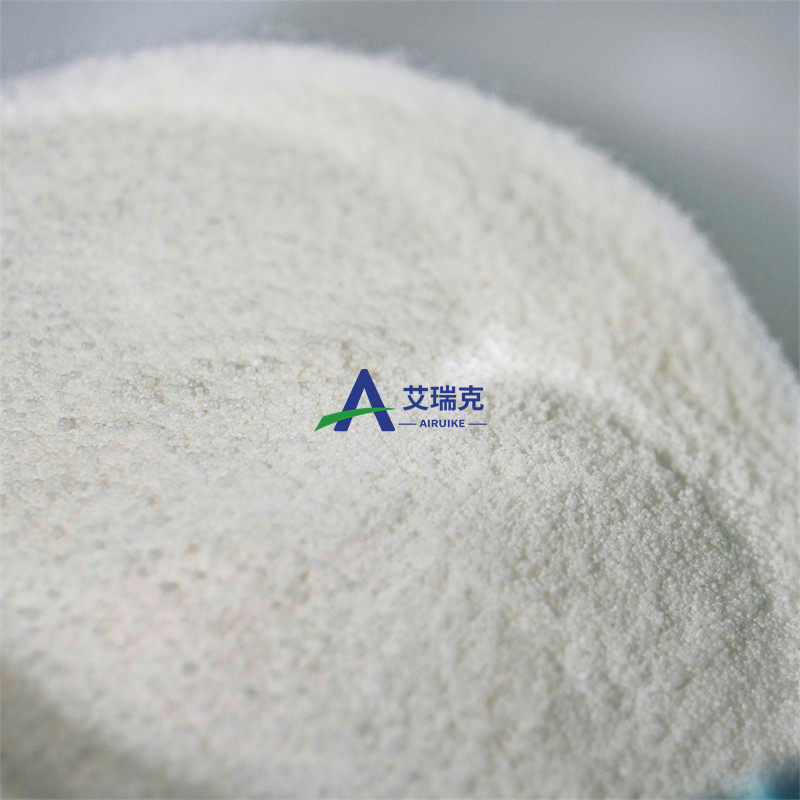Science: new research reveals that tau protein is the real cause of Alzheimer's disease
-
Last Update: 2020-01-12
-
Source: Internet
-
Author: User
Search more information of high quality chemicals, good prices and reliable suppliers, visit
www.echemi.com
January 12, 2020 / Biovalley BIOON / - -- in a new study, researchers from the University of California, San Francisco, found that brain imaging of pathological tau protein "tangles" can reliably predict the location of brain atrophy in Alzheimer's patients one year or more in advance In contrast, the location of amyloid plaques, which have been the focus of Alzheimer's disease research and drug development for decades, has little use in predicting how brain damage will unfold as the disease progresses The related research results were recently published in the Journal of Science Translational Medicine The title of the paper is "prospective longitudinal pathway in Alzheimer's disease correlates with the intensity and topology of baseline tau pet" The brain of Alzheimer's patients was scanned with pet The picture was from public domain These results make scientists increasingly realize that tau leads to brain degeneration in Alzheimer's disease more directly than amyloid protein, and also confirm that the recently developed tau based PET brain imaging technology (hereinafter referred to as tau PET) can accelerate clinical trials of Alzheimer's disease and improve personalized patient treatment Dr Gil Rabinovici, co-author of the paper and head of the PET imaging program at the University of California, San Francisco, said, "the match between the spread of tau and the changes in the brain over the next year is amazing Tau PET imaging can not only predict how much brain atrophy we will observe, but also predict the location of this atrophy These predictions are much more powerful than anything we can do with other imaging tools, and further confirm that tau is a major driver of the disease " With the failure of the treatment based on amyloid protein, people are increasingly interested in tau Scientists who study Alzheimer's disease have long argued about the relative importance of amyloid plaques and tau protein tangles These two misfolded protein aggregates can be observed in autopsy studies of patients' brains, which were first discovered by Alois Alzheimer in the early 20th century For decades, "amyloid camp" has occupied a leading position, which has led to many efforts to delay Alzheimer's disease with amyloid targeted drugs, but the results are disappointing or mixed Many scientists are now re studying tau protein, which has been simply regarded as the "tombstone" of dead cells and ignored by people, and are studying whether tau is really an important biological driving force of the disease Amyloid protein is widely gathered in the whole brain, sometimes even in the brain of asymptomatic people In contrast, autopsy of patients with Alzheimer's disease shows that tau happens to gather in the most atrophic areas of the brain and other locations that help explain the differences in symptoms (for example, language related areas and memory related areas) "No one doubts that amyloid plays a role in Alzheimer's disease, but more and more discoveries about tau are beginning to change people's view of the real cause of the disease," said Dr Renaud La joie, a postdoctoral researcher at Rabinovici laboratory and the author and first author of the paper However, it is difficult to confirm that tau tangles can lead to brain degeneration only by looking at the brain tissue after death One of the main goals of our team is to develop noninvasive brain imaging tools that allow us to see if the location of tau protein in the early stages of the disease indicates subsequent brain degeneration " Tau PET scan can predict the location of brain atrophy in the future Although it was suspected in the early days that tau might not be measured in the living brain, scientists have recently developed an injectable molecule called flortaucipir (currently under review by the US Food and Drug Administration), which combines with misfolded tau and emits a light radioactive signal that can be captured by PET scanning Rabinovici and Dr William jagust of the University of California, Berkeley were among the first scientists to use tau PET imaging technology to study the distribution of tau protein tangles in the normal aging brain and carry out small cross-sectional studies on Alzheimer's patients Their new study represents the first attempt to test whether tau levels in Alzheimer's patients can predict future brain degeneration La joie recruited 32 participants with early Alzheimer's disease through the memory and aging center of the University of California, Berkeley, and PET scans were performed on all participants using two different tracers to measure the levels of amyloid and tau proteins in their brains At the start of the study and at a follow-up visit of one to two years, the participants also underwent MRI scans to measure the structural integrity of their brains The researchers found that the overall tau level in the brains of these participants at the start of the study predicted how much brain degeneration would occur at follow-up (after an average of 15 months) In addition, the local pattern of tau accumulation can predict the subsequent brain atrophy at the same location, with an accuracy of more than 40% In contrast, baseline amyloid PET scans correctly predicted only 3% of future brain degeneration "The observation that the accumulation of tau protein can predict the location of brain degeneration supports our hypothesis that tau is a key driver of neurodegeneration in Alzheimer's disease," La joie said It is worth noting that PET scans showed a higher overall level of tau in the brain of younger participants compared to older participants, and a stronger correlation between baseline tau levels and subsequent brain atrophy This suggests that other factors, such as other abnormal proteins or vascular damage, may play a greater role in tardive Alzheimer's disease, the researchers said The ability to predict brain atrophy is a "valuable precision medical tool." these results make people more hopeful that drugs targeting tau currently being studied at the memory and Aging Center at the University of California, Berkeley and elsewhere may provide clinical benefits for patients by blocking the main drivers of neurodegeneration in this disease At the same time, the ability to use tau pet to predict future brain degradation may enable more personalized dementia care and accelerate ongoing clinical trials, the researchers said "One of the things people want to know when they hear the diagnosis of Alzheimer's is the future impact on themselves or their loved ones," Rabinovici said Is this a long-term decline in memory, or is it a rapid progression to dementia? How long will the patient be able to live independently? Will they lose the ability to speak or walk alone? These are questions we can't answer right now Now, for the first time, this imaging tool allows us to give our patients a sense of what's going to happen by uncovering the biological processes that cause the disease " Rabinovici and his team also predict that the ability to predict future brain atrophy based on tau PET imaging will enable clinical trials for Alzheimer's disease to quickly assess whether experimental drugs can change predictive specific trajectories for individual patients, which is currently impossible to achieve, because the progress of the disease varies greatly among different individuals The new insights may be able to adjust the dosage of the drug, or if the first drug does not affect the tau level or change the predicted brain atrophy trajectory of patients, it may switch to other experimental compounds "Tau pet may be an extremely valuable precision medical tool in future clinical trials," Rabinovici said The ability to track the accumulation of tau protein in living patients sensitively will enable clinical researchers to seek for the first time drugs that can slow down or even prevent specific brain atrophy patterns predicted for each patient " (bio Com) reference: 1 Renaud La joie et al Prospective longitudinal pathway in Alzheimer's disease correlates with the intensity and topology of baseline tau pet Science Translational Medicine, 2020, DOI: 10.1126/scitranslmed.aau5732 2 Alzheimer's' tau 'protein far passes in predictive total on brain tissue https://medicalxpress.com/news/2020-01-alzheimer-tau-protein-surpasses-amyloid.html
This article is an English version of an article which is originally in the Chinese language on echemi.com and is provided for information purposes only.
This website makes no representation or warranty of any kind, either expressed or implied, as to the accuracy, completeness ownership or reliability of
the article or any translations thereof. If you have any concerns or complaints relating to the article, please send an email, providing a detailed
description of the concern or complaint, to
service@echemi.com. A staff member will contact you within 5 working days. Once verified, infringing content
will be removed immediately.







